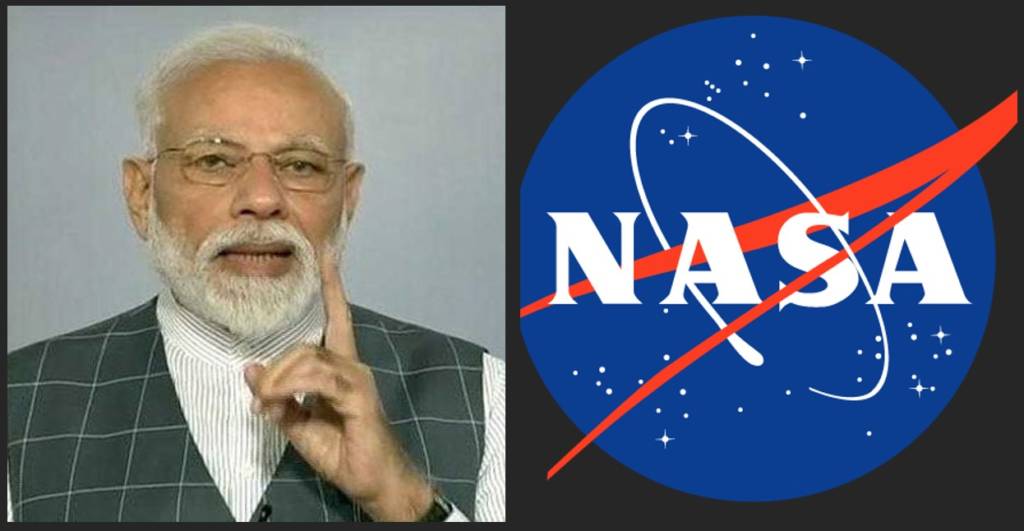Earlier this year, India made a big leap in its space technology capabilities and became only the fourth nation to boast of Anti Satellite weapons technology. India possesses both civilian and military space assets, and the country has been focussing on increasing its space assets-build up. In today’s time, no country can afford taking its space infrastructure lightly. Therefore, it was indispensable for India to ensure sufficient protection of its increasing number of satellites. Given how China has been able to develop ASAT weapons technology, India couldn’t afford not to create a deterrent effect. Now, a latest report from the National Aeronautics and Space Administration (NASA) has claimed that 49 pieces of debris from the ASAT test in March are still roaming in Space.
The report has come under criticism from an Indian missile expert who has called it “malicious campaign against India”. The test titled “Mission Shakti” reportedly broke DRDO’s Microsat-R satellite weighing 740-kg on March 27. NASA’s latest orbital debris quarterly news has now stated, “At the time of breakup, over 400 fragments were initally tracked at approximately 294 x 265 km altitude by US Strategic Command’s Space Surveillance Network (SSN). A total of 101 debris have entered the public satellite catalog (database containing a list of objects in orbit), of which 49 fragments remain on orbit as of July 15.”
Missile expert and former DRDO scientist Ravi Gupta spoke to Times of India about the NASA report. He told Times of India that the NASA report “smells of a malicious propaganda against the country”. He added, “Why can’t NASA talk about the debris generated by its own country, Russia or China?
These countries together had generated a large number of debris in space with their tests and satellite launches. Even if 49 pieces of debris are loitering around in the low-earth orbit, what are their size? Only if the debris are above 10cm in size can they be tracked by the US, not those smaller than that size. Secondly, if the debris are now around 100km, they don’t pose a danger to any spacecraft as most of the satellites, including International Space Station, are hovering between 400 km and 1,000 km altitude.”
Gupta made it clear that India being an emerging space power, is giving tough competition to other countries in the space sector. He remarked that the “US is not worried about space environment, but economics”. ISRO, India’s space agency, has indeed emerged as a major space power on the global scenario in the recent past and therefore, Gupta has claimed that the US is worried about India’s rise as a space power to reckon with.
The TOI report has also added that according to the space track website that tracks satellites and debris in space, the US has generated 4,804 debris in space comparison to India’s 173 debris. Earlier in the month of April this year, DRDO chairman G Satheesh Reddy had said that most of the debris generated from the test had decayed and the rest would dissipate in a “short period of time.”
This is not for the first time that there have been apprehensions about about attempts to belittle India’s ASAT test. Shortly after the ASAT test, The New York Times, an esteemed publication, from its official Twitter account, wrote, “India’s prime minister announced that India had shot down a low-orbit satellite with a missile in a test. If confirmed, a successful missile test would put India in a small club of countries that have proved their ability to destroy targets in space.” The use of the term “If confirmed” was highly absurd. This technological leap had been confirmed by the Pentagon, so it’s unclear what further confirmation did the New York Times desire.
It is clear that India has emerged as a leading space power. The ASAT was one of its major achievements in the recent past. India has developed into a leading space power in the recent past. But the westerners are still to come to terms with the fact. That a country that was a British colony till 1947, is now a major space superpower, is acceptable to a majority of players in the western world. Hence their racism keeps surfacing in forms of articles, artwork or allegations such as these. In 2014, a distasteful cartoon featuring in the New York Times had exposed how the western elitist countries looked down upon India’s space programme. The newspaper had published a very derogatory and racist cartoon in their issue. Instead of lauding India for its achievement, as an unbiased media organization would have, the New York Times sneered the countrymen and its cows- the holy animal, portraying India in a very bad light. This had captured the unacceptable western thought about India’s prowess in the space sector, which has now come to the fore yet again with the recent NASA report.
